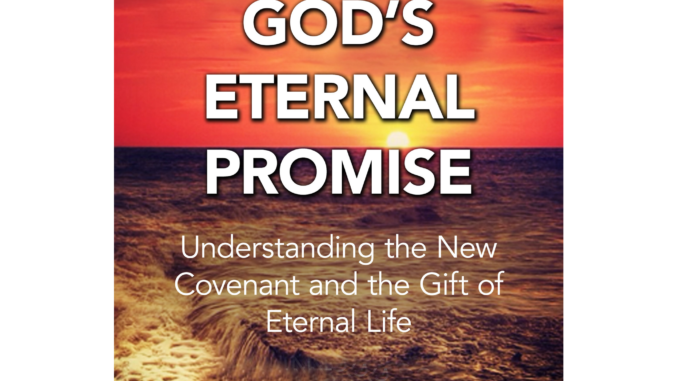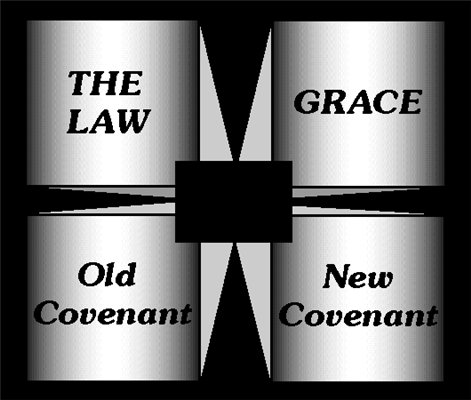
Unveiling the Profound Contrast: Old Covenant of Law vs. New Covenant of Grace

Law vs Grace
In the complex story of biblical theology, the distinction between the Old Covenant of Law and the New Covenant of Grace emerges as a defining keys that shape the Christian faith.
Rooted in key passages such as Galatians 4:21-30 and 2 Corinthians 3:6-11, alongside an exploration of the Abrahamic Covenant, we unravel the profound differences between these two covenantal frameworks and their implications for believers today.
At the heart of the comparison between the Old Covenant and the New Covenant lies the stark contrast of Law and Grace. The Old Covenant, symbolised by Mt Sinai, epitomises the era of bondage to the Law, characterised by rigid legalism and the ministry of condemnation. In contrast, the New Covenant, symbolised by Mt Zion, represents the era of freedom and grace, ushering in the ministry of life and righteousness through the Holy Spirit.
Central to understanding this dichotomy is the imagery of Hagar and Sarah, representing the contrast between slavery and freedom, the flesh and the Spirit. In Galatians 4:21-30, Paul allegorically portrays Hagar as the emblem of the Old Covenant, characterised by bondage and servitude, while Sarah symbolises the New Covenant, marked by freedom and promise.
Similarly, in 2 Corinthians 3:6-11, Paul contrasts the ministry of the Ten Commandments under the Old Covenant, which brings death and condemnation, with the ministry of the Holy Spirit under the New Covenant, which brings life and righteousness. The fading glory of the Old Covenant is superseded by the increasing greater glory of the New Covenant, which is characterised by permanence and transformation.
Moreover, the Abrahamic Covenant serves as a precursor to the New Covenant, foreshadowing God’s redemptive plan for humanity. Through the covenant ceremony in Genesis 15, God promises Abram descendants as numerous as the stars and seals the covenant with a smoking furnace and a burning lamp, symbolising His presence and commitment to fulfilling His promise. This covenant, rooted in God’s grace and faithfulness, lays the groundwork for the ultimate fulfilment found in Christ.
The contrast between the Old Covenant and the New Covenant is further underscored by the foundational principles that govern each covenant. While the Old Covenant is based on the blood of animals and the adherence to the Ten Commandments, the New Covenant is established on the blood of Jesus and the commandment of love.
In conclusion, the distinction between the Old Covenant of Law and the New Covenant of Grace illuminates the transformative power of God’s redemptive plan for humanity. As believers, we are called to embrace the freedom and righteousness afforded by the New Covenant, walking in the fullness of God’s grace and experiencing the life-giving ministry of the Holy Spirit. Through understanding the contrast between these two covenantal frameworks, we gain insight into the profound depth of God’s love and His unwavering commitment to His people.
Law vs Grace
Read Gal 4:21-30
Galatians 4:21-30
Bond and Free
21 Tell me, you who want to be under law, do you not listen to the law? 22 For it is written that Abraham had two sons, one by the bondwoman and one by the free woman. 23 But the son by the bondwoman was born according to the flesh, and the son by the free woman through the promise. 24 This is allegorically speaking, for these women are two covenants: one proceeding from Mount Sinai bearing children who are to be slaves; she is Hagar. 25 Now this Hagar is Mount Sinai in Arabia and corresponds to the present Jerusalem, for she is in slavery with her children. 26 But the Jerusalem above is free; she is our mother. 27 For it is written,
“Rejoice, barren woman who does not bear;
Break forth and shout, you who are not in labour;
For more numerous are the children of the desolate
Than of the one who has a husband.”
28 And you brethren, like Isaac, are children of promise. 29 But as at that time he who was born according to the flesh persecuted him who was born according to the Spirit, so it is now also. 30 But what does the Scripture say?
“Cast out the bondwoman and her son,
For the son of the bondwoman shall not be an heir with the son of the free woman.”
| Question | Old Covenant Law | New Covenant Grace |
|---|---|---|
| Slave-son | Free-son | |
| Slave-woman | Free-woman | |
| Flesh | Promise (Spirit) | |
| Old Covenant | New Covenant | |
| Mt Sinai | Mt Zion [Heb 12:18-23] | |
| Hagar | Sarah | |
| Jerusalem | Jerusalem above |
The letter vs the Spirit
Read 2 Corinthians 3:6-11
2 Corinthians 3:6-11
6 who also made us adequate as servants of a new covenant, not of the letter but of the Spirit; for the letter kills, but the Spirit gives life.
7 But if the ministry of death, in letters engraved on stones, came with glory, so that the sons of Israel could not look intently at the face of Moses because of the glory of his face, fading as it was, 8 how will the ministry of the Spirit fail to be even more with glory? 9 For if the ministry of condemnation has glory, much more does the ministry of righteousness abound in glory. 10 For indeed what had glory, in this case has no glory because of the glory that surpasses it. 11 For if that which fades away was with glory, much more that which remains is in glory.
| Question | Ministry of the Ten Commandments | Ministry of the Holy Spirit |
|---|---|---|
| Ministry of death | Ministry of life | |
| Ministry of condemnation | Ministry of righteousness | |
| No longer holds any glory | Increasing greater glory | |
| Fading glory | Permanent glory |
(Next Page 2)
